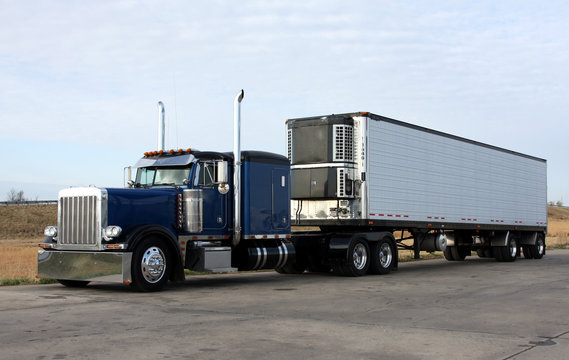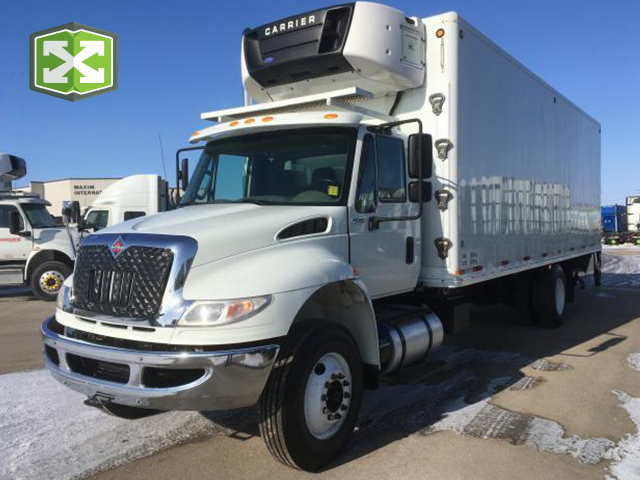Leading Advancements in Transport Refrigeration: Enhancing Efficiency and Security
The landscape of transport refrigeration is going through substantial change, driven by technologies aimed at improving both efficiency and security. As these developments proceed to advance, it is necessary to explore their effects on operational techniques and regulatory compliance, triggering a closer assessment of just how they reshape the future of transport refrigeration.
Smart Temperature Level Monitoring Solutions
In the world of transport refrigeration, wise temperature level surveillance systems have actually arised as a vital innovation for making sure the integrity of temperature-sensitive goods. These advanced systems utilize Web of Things (IoT) technology to give real-time information on temperature variations, enabling drivers to preserve ideal problems throughout the supply chain. By continually tracking the temperature level of refrigerated containers and lorries, firms can swiftly recognize inconsistencies that might jeopardize item top quality.

Additionally, wise tracking systems often include automated notifies and alerts, allowing stakeholders to respond without delay to any prospective concerns. This proactive approach not just reduces the danger of putridity but also boosts compliance with regulatory standards regulating food safety and security and pharmaceutical transport.
The assimilation of information analytics within these systems additionally facilitates anticipating maintenance, aiding operators to anticipate potential tools failings prior to they occur. This capacity reduces downtime and optimizes operational effectiveness, ultimately resulting in cost savings.
Eco-Friendly Refrigerants
Smart temperature level surveillance systems play a vital function in preserving item high quality, however the performance of transportation refrigeration likewise pivots on the selection of cooling agents made use of. In contrast, emerging alternatives like hydrocarbon-based cooling agents and hydrofluoroolefins (HFOs) present lower GWP alternatives, using both effectiveness and sustainability.
These green refrigerants not only minimize environmental effect yet additionally straighten with global regulations aimed at eliminating dangerous compounds. Their adoption can result in improved power efficiency, inevitably decreasing operating costs for transportation refrigeration systems. Furthermore, the usage of all-natural refrigerants, such as ammonia and carbon dioxide, has gotten grip as a result of their exceptional thermodynamic residential or commercial properties and lower environmental footprint.
Purchasing environment-friendly refrigerants is not simply a governing conformity procedure; it stands for a calculated choice that enhances brand credibility and fosters client loyalty. thermo king truck refrigeration units. By focusing on sustainable techniques, firms can add to a greener future while guaranteeing the honesty of transported goods
Advanced Insulation Products
Utilizing sophisticated insulation products is essential for maximizing transportation refrigeration systems, as they considerably improve energy effectiveness and keep regular temperature level control. Typical insulation methods usually drop brief in stopping thermal transfer, leading to raised energy consumption and varying temperature levels within chilled areas.
Emerging products such as vacuum protected panels (VIPs) and aerogels supply remarkable thermal resistance, enabling thinner profiles without compromising efficiency. VIPs, for example, utilize a vacuum layer to lessen convective and conductive warm transfer, making them excellent for space-constrained applications. Aerogels, known for their light-weight and porous framework, supply outstanding insulation while significantly reducing total system weight.
Moreover, integrating phase modification materials (PCMs) into insulation systems can even more stabilize temperature levels throughout transportation. These materials soak up and launch thermal power, efficiently buffering versus external temperature variations.
The combination of these innovative insulation products not just minimizes the functional expenses linked with power intake but likewise prolongs the life span of temperature-sensitive goods. As the transportation refrigeration market remains to advance, the adoption of ingenious insulation technologies will be pivotal in boosting both efficiency and safety and security in chilled transport.
Automated Path Optimization
The performance of transportation refrigeration systems is greatly enhanced through automated path optimization, which leverages real-time data and innovative formulas to figure out the most reliable courses for shipment. By examining various aspects such as website traffic patterns, weather, and delivery home windows, these systems can substantially decrease traveling time and gas consumption.
Automated route optimization reduces human mistake and subjective decision-making, which can lead to ineffectiveness. This modern technology allows fleet supervisors to allot sources better, guaranteeing that cooled products maintain their needed temperature throughout the journey. By optimizing routes, business can also boost customer complete satisfaction with timely distributions.
In addition, automated systems can adapt to unexpected situations, such as roadway closures or abrupt website traffic spikes, permitting dynamic rerouting. This adaptability not only secures the integrity of temperature-sensitive items however additionally adds to overall operational efficiency.
Carrying out automated route optimization can result in significant price financial savings while lowering the carbon footprint connected with transportation. As companies increasingly focus on sustainability, this advancement sticks out as a crucial component in contemporary transport refrigeration, lining up functional objectives with environmental duty. Ultimately, automated course optimization stands for a considerable improvement in the quest for efficiency and safety and security in transport refrigeration.

Real-Time Information Analytics
Automated path optimization significantly take advantage of the integration of real-time information analytics, which offers vital understandings right into the efficiency of transport refrigeration systems. By making use of real-time data, transportation operators can monitor temperature changes and equipment efficiency, making sure that disposable goods are maintained within called for parameters throughout transportation. This proactive technique not only enhances the quality of the transported products but additionally alleviates the danger of putridity and loss.

In enhancement to boosting performance, real-time analytics enhances security by guaranteeing conformity with governing criteria for temperature control. This not just secures public health and wellness however additionally fortifies a firm's credibility browse around here - thermo king transport refrigeration. As the transportation refrigeration industry advances, the integration of real-time data analytics becomes a keystone for driving innovation, sustainability, and functional excellence
Conclusion
To conclude, the advancements in transport refrigeration substantially improve both efficiency and safety go to this web-site and security within the market. Smart temperature monitoring systems and real-time information analytics provide essential oversight, while environment-friendly cooling agents and advanced insulation products contribute to sustainability and power performance. In addition, automated path optimization algorithms not just minimize traveling time however likewise decrease ecological effect. Jointly, these innovations represent a critical advancement in transport refrigeration, making certain conformity with regulative criteria and promoting a greener future.
The landscape of transportation refrigeration is undergoing significant transformation, driven by innovations intended at boosting both performance and security.Smart temperature level surveillance systems play an essential duty in preserving product quality, but the efficiency of transport refrigeration likewise pivots on the option of cooling agents used. Their fostering can lead to improved power effectiveness, eventually reducing operating costs for transport refrigeration systems. Inevitably, automated course optimization represents a considerable improvement in the quest for performance and safety in transport refrigeration.
In final thought, the browse this site innovations in transport refrigeration considerably improve both efficiency and security within the industry.